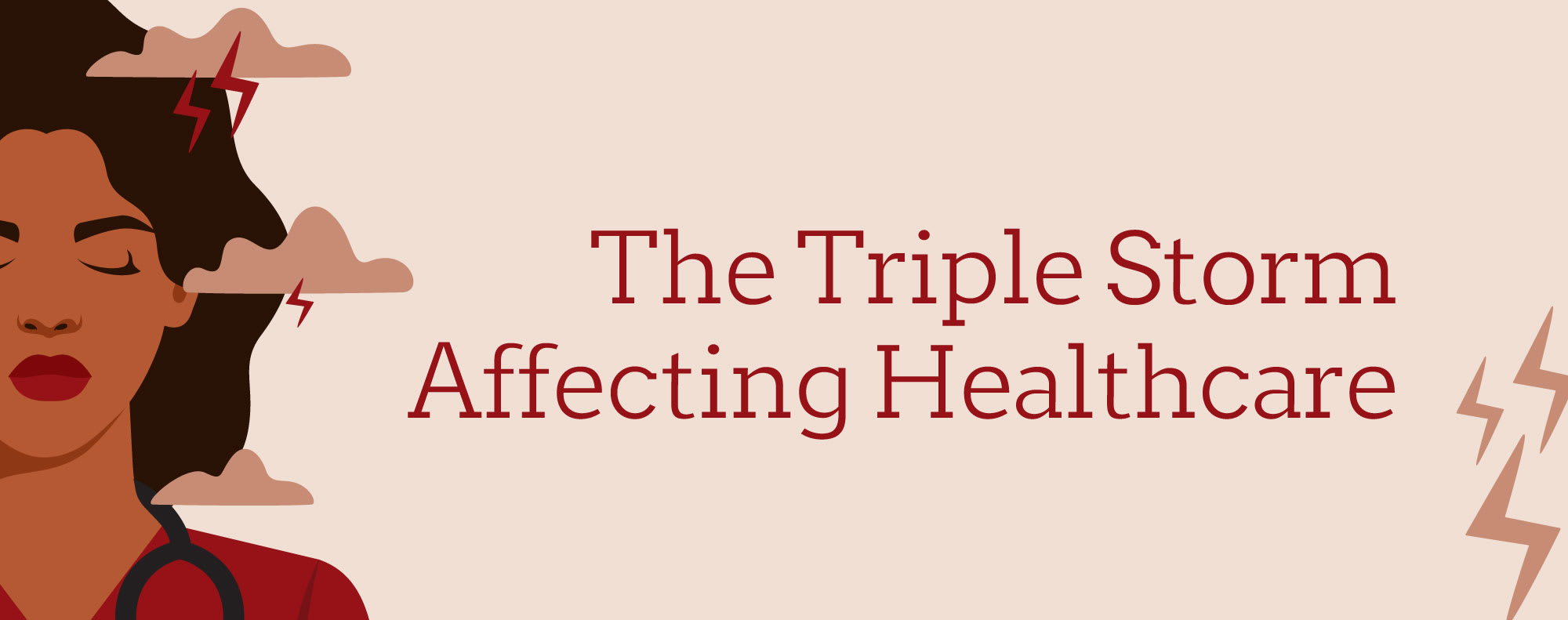
The Triple Storm Affecting Healthcare
Written By: Ibby Smith Stofer
There is a triple storm affecting healthcare right now. Many may think it is the ever-growing presence of COVID, RSV, and Flu!
But there may be other considerations. Although that threat is real and causing devastation as patients and care givers alike fear the potentially deadly consequences of it, another storm is also wreaking havoc on our healthcare system.
The impact of challenges outside of direct patient illness are staff shortages, reimbursement reductions by Medicare, inflation impacts, investment income, declining inpatient admissions and increased labor and supplies costs.
No matter if you are the lowest paid employee in a healthcare setting, or the CEO, CNO, CFO or any other C suite person, these forces are combining and contributing to an environment ripe for closures, mergers, and reduction in services. Will you get the care you need? Will you lose your job due to reductions? Will your facility survive, be bought, merged, or closed? This combined with the impact of COVID 19 and RSV infections is leaving many areas of healthcare struggling. It is not unheard of to spend hours in an ER waiting room or to have your surgery postponed due to staff or bed related conflicts.
Research indicates that there are no easy answers, just as currently there is no prevention of the diseases that are in the daily news. On November 1, 2022, Becker’s Hospital Review announced that CMS was reducing reimbursement rate to over half of the US hospitals due to readmission rates.
In October the National Association for Healthcare Quality included this projection: “The United States Bureau of Labor Statistics is projecting that 500,000 nurses will leave the profession this year, resulting in a shortage of over one million nurses across the continuum of care.”
Nursing is not the only profession being impacted. Physicians, radiologist, and others are also reporting significant shortages. Rural and Critical Care hospitals continue to close or transition to emergency only sites.
While it appears to be a doom and gloom outlook, there are many organizations and governmental agencies working to find relief, not only for the healthcare providers, but for the patients in need of care.
Medical device companies as well as financial service companies that work with only healthcare are offering new technology and acquisition options that are also designed to offer ways to relieve staff and patient dissatisfaction. Robots are cleaning floors and performing routine deliveries to free clinical staff and others from these tasks. Imaging companies are offering technology that does not require radiologists to take an x-ray and can be done at the initial point of care. Telehealth providers, remote monitoring technology, as well as electronic health record systems have allowed more patients and services to be provided in the home or community settings.

Each of us need to be understanding of the current environment and stress that all healthcare providers are living under.
Healthcare’s top concerns follow one of the most disruptive events of my lifetime. 2020’s impact of COVID 19 redefined so many of the things in our lives. Today inflation, staff shortages, and funding sources are creating a different surge that will further redefine how we see traditional or alternate methods of patient care.
Each of us needs to consider how the events of today are impacting both the providers and us or family. It requires greater patience and creative solutions, some of which are already here and others that will follow.
Having spent my entire career of over 40 years supporting healthcare providers in a variety of positions, I think now is one of the hardest challenges facing all who may not be directly providing care but need to understand how we can help. Med One Group is my current employer, and we believe we will make a difference through our work with providers, suppliers, and innovators.
Each of us and our respective employers need to be understanding of the current environment and stress that all healthcare providers are living under on a daily basis. The days of having a family physician who could see you within hours or come to your home are only distant memories.
Appointments and consults are being conducted virtually or telephonically. Things look and feel different because they are different and because they must be different!
Let us all hope that this triple storm affecting the healthcare industry passes quickly and swiftly. In the meantime, let’s show greater patience, acceptance, and understanding of not only healthcare, but all businesses that are struggling to survive today’s changing and turbulent economic reality.
